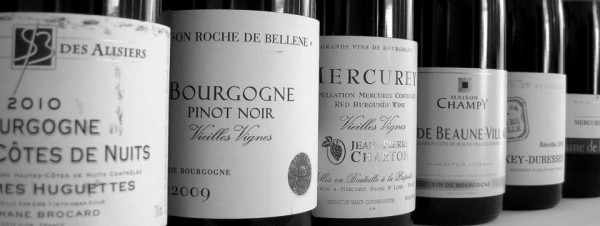 A BRITISH-BORN FRIEND now in his 70s remembers a time when high quality red Burgundy was commonly found on the tables of clergymen, schoolteachers, and other folk of quite modest means in the Liverpool he remembers. It seems amazing that wines now so sought after could once have provided everyday enjoyment for ordinary middle-class people – but it was so.
A BRITISH-BORN FRIEND now in his 70s remembers a time when high quality red Burgundy was commonly found on the tables of clergymen, schoolteachers, and other folk of quite modest means in the Liverpool he remembers. It seems amazing that wines now so sought after could once have provided everyday enjoyment for ordinary middle-class people – but it was so.
Today, whether at the village or cru level, wine from Burgundy’s prestige core (the narrow chain of east-facing slopes that run almost due north-south from Dijon to around Chagny, known as the Cote d’Or), can be very expensive indeed. Bottles from top villages are typically priced from $45 to $60; premier crus from $60 to $90; grand crus start at around $100 and ascend to dizzying heights. Does the experience justify such rarified prices? You’ll have to ask the people who pursue them. For some, Burgundy isn’t just wine, it’s both an aesthetic and a kind of high moral principle.
Sources of Burgundy’s mystique are multiple: its vineyards flourished under the continuous care of cloistered communities during the Middle Ages; early on a single grape variety, pinot noir, became the dominant varietal for reds; after the Revolution, vineyard ownership devolved into a numerous and diverse band of fiercely independent-minded artisans; vineyards lie close to the northern limits of where grapes can ripen. If you’ve been seduced by the notion that it is the task of fine wine to express the minute shadings of character that distinguish one postage stamp-size point of origin from another (that’s the high moral principle part), thank the Burgundians.
Like many wine regions, Burgundy derives prestige from a few super premium appellations, but value is often found in its byways. Alongside its elite output is a parallel universe of affordable red wines ($30 and under, for our purposes) that can faithfully reflect the delicate fruit and shimmering acidity of high-latitude, Old World pinot that is the region’s most bankable asset.
To find them, explore B-list Cote d’Or communes such as Auxey-Duresses, Marsannay, Maranges, Chorey, or Santenay, or seek out blends designated Hautes-Cotes de Beaune or Nuits-Saint-Georges Villages. Another source: the adjacent sub-region of the Cote Chalonnaise where Givry and Mercurey provide value. The Cotes d’Auxerre to the west is also worth a look. Even simple Bourgogne rouge, when it comes from a conscientious producer, can be lovely.
It may be baby Burgundy, but it’s Burgundy, baby.
Closerie des Alisiers “Les Dames Huguettes’’ Hautes Cotes de Nuits 2010 Attractive aromas of sour cherry and loamy earth with a lightly mossy aspect; mouth is brisk and lively, echoing the cherry keynote. Delicate, clean, fresh, and bright. Around $18.
Maison Roche de Bellene Bourgogne 2009 Modestly aromatic with some hard, high-toned, slightly candied cherry fruit and loamy notes; sleek and trim with quite firm, mouth-cleansing acidity. Only modest complexity here, but pleasantly lively and refreshing. Around $20.
Jean-Pierre Charton Vielles Vignes Mercurey 2009 Nose shows some high-toned red fruits and loam – very clean and attractive; on the palate, some nice richness and a fairly lush texture; good steady mid-palate presence; some subtle notes of new oak; all around pleasing firmness and composure.
Maison Champy Cote de Beaune Villages 2009 Medium garnet-blood orange hue; open, fragrant, forest-like aromas; attractive presentation of lightly tart, high-toned cherryish fruit; good balance and pleasant, nicely scaled acidity. Around $28.
Domaine Terres de Velle Auxey-Duresses 2009 Earthy aromas with notes of roasted meat; light to medium-bodied sweet cherry fruit and an oaky note; good persistence through mid-palate; nicely firm acidity with no jumpiness; some cut and structure; a stylishly modern take. Around $29.
Domaine de la Monette Mercurey 2009 Distinctly rich, oak-influenced aroma profile; palate sleek and shapely, showing neatly proportioned and well-balanced fruit with oak garnish; texture a little grainy, but will resolve. Around $30.
Reach me at stephenmeuse@icloud.com
Follow @stephen_meuse